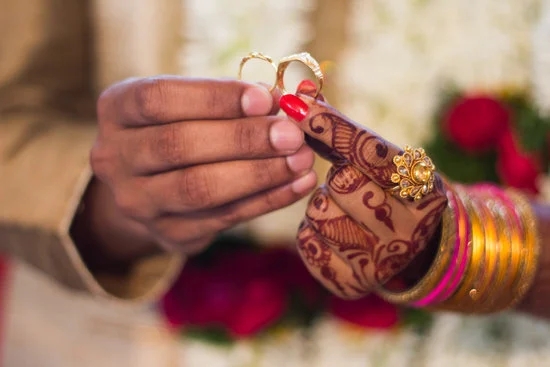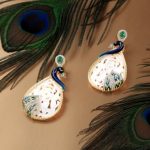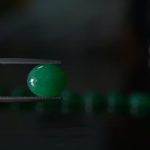Crimp beads are essential in jewelry making for securing and finishing off pieces. Understanding how to use crimp beads for jewelry is crucial for achieving professional-looking results. In this article, we will explore the importance of crimp beads in jewelry making and provide a comprehensive guide on how to use them effectively.
Crimp beads are small metal beads that are used to secure the ends of beading wire, preventing beads from slipping off and ensuring a finished look to your jewelry pieces. They are an indispensable component in creating securely constructed necklaces, bracelets, and earrings. Learning how to properly use crimp beads is fundamental for any jewelry maker, whether you’re a beginner or an experienced crafter.
In the following sections, we will discuss the tools and materials needed for using crimp beads, provide a step-by-step guide on how to use them, examine the different types of crimp beads available, address common issues and mistakes to avoid, offer design ideas on incorporating crimp beads into your creations, and provide expert tips for achieving professional-looking results. Mastering the art of using crimp beads opens up endless possibilities for creating stunning and secure jewelry pieces.
Whether you’re looking to create dainty beaded necklaces or statement earrings, understanding how to use crimp beads is essential for any jewelry maker.
Tools and Materials
Crimp beads are a fundamental component in jewelry making, particularly when it comes to securing and finishing off pieces. To effectively use crimp beads in your jewelry projects, it is essential to have the right tools and materials at hand.
The first tool you will need is a pair of chain-nose pliers. These pliers are essential for gripping the crimp bead and squashing it tightly without causing any damage to the wire. Another crucial tool is a pair of crimping pliers specifically designed for working with crimp beads. These pliers have special notches and grooves that allow for effective folding and securing of the crimp bead.
In addition to the tools, having the right materials is equally important. You will need beading wire or stringing material of your choice, as well as the crimp beads themselves. It’s recommended to use sterling silver or gold-filled crimp beads for their durability and resistance to tarnishing over time. And finally, don’t forget to have some bead stoppers on hand to keep your beads from sliding off while you work.
To start using crimp beads for jewelry making, gather all the necessary tools and materials mentioned above. Once you have everything you need, you can follow the step-by-step guide for using crimp beads to secure and finish off your jewelry pieces with ease and precision.
Step-by-Step Guide
Crimp beads are an essential component in jewelry making, particularly when it comes to securing and finishing off pieces. Whether you’re creating necklaces, bracelets, or earrings, knowing how to use crimp beads properly is crucial for ensuring the durability and professional appearance of your jewelry designs.
Selecting the Right Crimp Beads
Before you begin using crimp beads, it’s important to choose the right type for your project. Crimp beads come in various shapes, sizes, and materials, so consider factors such as the weight of the jewelry piece and the type of stringing material you’re using.
For instance, smaller crimp beads are suitable for delicate designs, while larger ones are better suited for heavier jewelry pieces. Additionally, consider whether you want a seamless finish with sterling silver or gold-filled crimp beads or a more decorative look with plated or coated options.
Using Crimp Beads Step-by-Step
To use crimp beads for securing and finishing off jewelry pieces, start by sliding a crimp bead onto your beading wire after stringing on your chosen beads. Then, thread the wire back through the crimp bead to form a small loop. Use flat nose pliers to flatten the crimp bead by gently squeezing it closed.
Once secure, trim any excess wire close to the flattened crimp bead to achieve a neat and polished finish. For added security and a professional touch, cover the flattened crimp bead with a crimp cover.
Finishing Touches
After securing your beading wire with crimp beads, it’s important to add a finishing touch to ensure longevity and aesthetic appeal. Attach a jump ring or other clasp findings to your jewelry piece before adding any additional embellishments such as charms or pendants. This step not only adds functionality but also contributes to the overall design of your finished jewelry piece.
With these step-by-step instructions on how to use crimp beads for jewelry making, you can confidently create secure and professionally finished pieces that will stand the test of time. Whether you’re a beginner or an experienced jewelry maker, mastering this technique opens up endless possibilities for designing stunning and durable jewelry pieces.
Different Types of Crimp Beads
Crimp beads are an essential component in jewelry making, used to secure and finish off pieces by holding the beading wire in place. They come in a variety of shapes, sizes, and materials, each offering unique advantages and considerations for different types of jewelry projects. Understanding the different types of crimp beads available in the market can help you choose the best option for your specific jewelry making needs.
- Shapes: Crimp beads come in three main shapes – round, tube, and twisted. Round crimp beads are the most common and versatile, suitable for most jewelry projects. Tube crimp beads are longer and narrower, providing a sleeker finish but requiring a bit more precision during use. Twisted crimp beads have a unique design that adds a decorative element to the finishing of jewelry pieces.
- Sizes: Crimp beads also vary in size, ranging from 1mm to 4mm or larger. The size you choose will depend on the thickness of your beading wire and the overall aesthetic you want to achieve. Thicker wires require larger crimp beads to secure them properly, while smaller beads may be preferred for delicate designs.
- Materials: The material of a crimp bead can impact its strength and durability. Most commonly, crimp beads are made of metal such as sterling silver or gold-plated brass. However, there are also options available in copper, stainless steel, and even colored finishes for added design versatility.
When deciding which type of crimp bead to use for your jewelry project, it’s important to consider the overall look and feel you want to achieve as well as the practicality of securing the beading wire effectively without compromising on aesthetics. Understanding the differences between shapes, sizes, and materials will help you make informed decisions when selecting crimp beads for your next jewelry making endeavor.
Troubleshooting
When using crimp beads in jewelry making, there are several common issues and mistakes that can arise. By understanding these issues and knowing how to avoid them, you can ensure that your jewelry pieces are secure and well-finished. One of the most common issues when using crimp beads is not applying enough pressure when securing the bead onto the wire.
This can result in the bead coming loose and your jewelry piece falling apart. To avoid this, be sure to use a crimping tool or chain-nose pliers to firmly press the crimp bead onto the wire.
Another mistake to avoid is using the wrong size of crimp bead for your project. Using a crimp bead that is too small may not hold the wire securely in place, while using one that is too large can create a bulky and unattractive finish. Make sure to select the appropriate size of crimp bead based on the thickness of your wire and the design of your jewelry piece.
Additionally, it’s important to be mindful of how many times you crimp the bead. Over-crimping can weaken the wire and eventually cause it to break, while under-crimping can result in a weak connection that may come apart over time. Practice using scrap pieces of wire and beads before working on your actual jewelry piece to find the right balance between firmness and flexibility when securing crimp beads.
By being aware of these common issues and mistakes when using crimp beads for jewelry making, you can confidently create professional-looking and durable pieces that will last for years to come.
Design Ideas
Crimp beads are an essential component in jewelry making, as they are used to secure and finish off jewelry pieces. These small metal beads are designed to be compressed with a crimping tool, creating a secure hold on the beading wire. Understanding how to use crimp beads for jewelry is crucial for ensuring that your designs are not only visually appealing but also durable and long-lasting.
When it comes to incorporating crimp beads into your jewelry designs, the possibilities are truly endless. One creative idea is to use colored crimp beads to add a pop of color and visual interest to your designs. This can be particularly effective when creating children’s jewelry or pieces with a playful and whimsical aesthetic. Additionally, using crimp beads of different shapes, such as tubes or rounds, can also add dimension and texture to your designs.
Another unique way to incorporate crimp beads into your jewelry designs is by using them as decorative elements. Instead of trying to hide the crimp bead within the design, embrace it as part of the overall aesthetic. For example, you can create a “floating” effect by strategically placing crimp beads along the length of a bracelet or necklace, adding an unexpected and modern touch to the piece.
In addition, consider experimenting with mixed metals when using crimp beads in your designs. Mixing silver and gold crimp beads within the same piece can create a striking contrast and give your jewelry a contemporary and edgy look. With these design ideas in mind, you can elevate your jewelry-making projects and create truly unique pieces that stand out from the rest.
| Design Ideas | Unique Incorporation |
|---|---|
| Colored Crimp Beads | Adding color and visual interest |
| Decorative Element | Showcasing crimp beads as part of the design |
| Mixed Metals | Create contrast by mixing different metal colors |
Tips and Tricks
When it comes to using crimp beads for jewelry making, there are several expert tips and tricks that can help you achieve professional-looking results. Whether you’re a beginner or an experienced jewelry maker, these tips can elevate your crimp bead techniques and ensure that your finished pieces look polished and secure.
Use the Right Tools
One of the most important tips for achieving professional-looking results when using crimp beads is to use the right tools. Invest in a good quality pair of crimping pliers specifically designed for working with crimp beads. These pliers will have notches that are perfectly sized to fold the crimp bead neatly and securely, ensuring a professional finish.
Choose the Right Size and Type of Crimp Bead
Another tip is to carefully consider the size and type of crimp bead you use for your jewelry making projects. Different sizes and shapes of crimp beads are available, so make sure to select one that is suitable for the diameter of your beading wire. Additionally, consider using different materials such as sterling silver or gold-plated crimp beads for a more high-end look.
Practice Proper Technique
Finally, practicing proper technique is essential for achieving professional results when using crimp beads. Make sure to trim any excess beading wire before securing the crimp bead, as leaving too much wire can lead to a messy finish. Additionally, apply even pressure when using your crimping pliers to ensure that the crimp bead folds neatly and securely without any gaps.
By following these expert tips and tricks, you can master the art of using crimp beads in jewelry making and create stunning pieces with a professional finish. Whether you’re creating bracelets, necklaces, or earrings, refining your crimp bead techniques can take your jewelry making skills to the next level.
Conclusion
In conclusion, mastering the art of using crimp beads in jewelry making is crucial for creating stunning and secure jewelry pieces. As we have learned throughout this article, understanding what crimp beads are and why they are important, along with knowing the tools and materials needed, are essential first steps. Following a step-by-step guide, exploring the different types of crimp beads available, and learning how to troubleshoot common issues will all contribute to achieving professional-looking results.
By mastering the use of crimp beads, jewelry makers open up endless possibilities for their creations. Whether it’s incorporating crimp beads into traditional designs or experimenting with unique and creative ways to use them in jewelry making, the versatility of crimp beads allows for an infinite range of design ideas. From delicate necklaces to statement earrings, from minimalist bracelets to intricate pendants, crimp beads can be used to add both functionality and aesthetic appeal to any jewelry piece.
In addition to these benefits, knowing how to use crimp beads for jewelry allows designers to create pieces that are not only visually appealing but also secure and long-lasting. By incorporating expert tips and tricks into their practice, jewelry makers can ensure that their creations stand the test of time. In this way, mastering the art of using crimp beads is not only important but also empowering for anyone seeking to elevate their skills as a jewelry maker.
Frequently Asked Questions
How Do You Use Crimp Beads?
Crimp beads are used to secure the ends of beading wire by flattening them with a crimping tool. First, thread the wire through the crimp bead, then through the clasp, and finally back through the crimp bead.
Why Won T My Crimp Beads Hold?
If your crimp beads aren’t holding, there may be a few reasons why. It’s possible that you’re not using the right size crimp bead for your wire, or you may not be applying enough pressure with your crimping tool to secure it properly.
Do You Need a Crimp Tool for Crimp Beads?
While it is possible to use pliers in place of a crimping tool for crimp beads, a dedicated crimping tool is highly recommended for achieving the best results. It provides more control and ensures that the bead is securely and evenly flattened without damaging the wire.

Welcome to my jewelry blog! My name is Sarah and I am the owner of this blog.
I love making jewelry and sharing my creations with others.
So whether you’re someone who loves wearing jewelry yourself or simply enjoys learning about it, be sure to check out my blog for insightful posts on everything related to this exciting topic!





